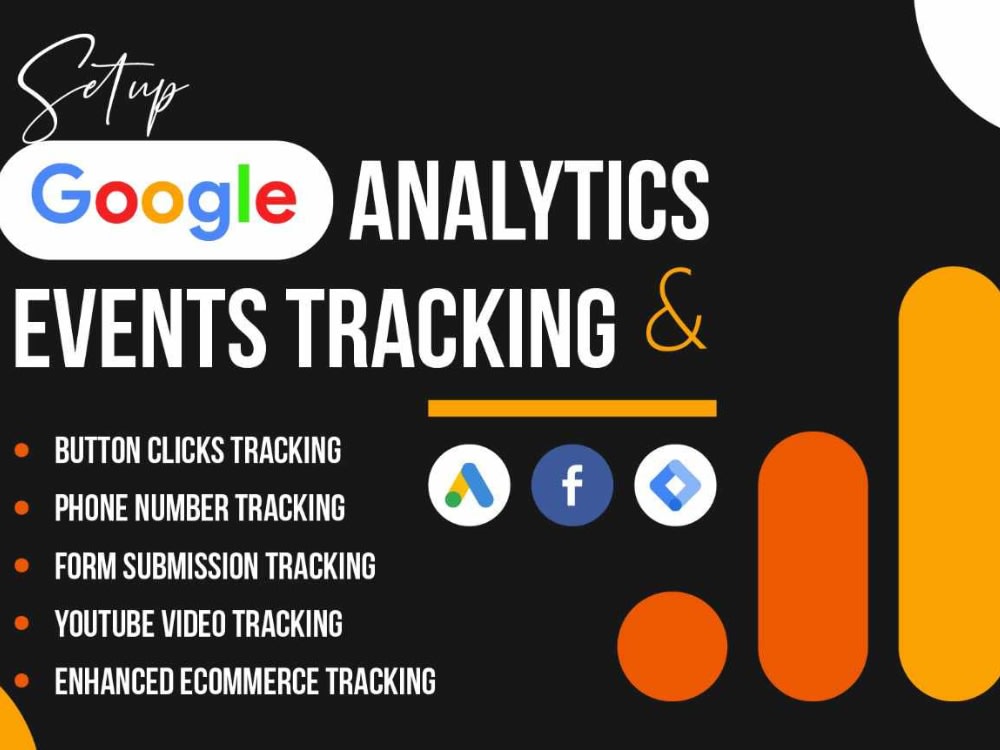5 Easy Facts About Google Analytics Event Tracking Explained
Table of ContentsThe Basic Principles Of Google Analytics Event Tracking How Google Analytics Event Tracking can Save You Time, Stress, and Money.Google Analytics Event Tracking Fundamentals ExplainedEverything about Google Analytics Event TrackingThe Facts About Google Analytics Event Tracking RevealedThe Buzz on Google Analytics Event Tracking

If you're going to establish up event monitoring manually, then you're mosting likely to have to add some added code to the aspects you desire to collect information from. The code you're mosting likely to collaborate with will certainly look something like this: There are 4 components within that code bit that you're mosting likely to need to specify on your own: event, Classification, occasion, Action, event, Tag and occasion, Value.
As you can see, 2 of these are required (classification and activity) while label and worth are optional. All of it depends on the sort of information you desire relayed back to Google Analytics when an individual clicks on the defined component (Google Analytics Event Tracking). It will be much easier to specify these elements if you evaluate your site and make a decision which elements/actions you desire to track
Google Analytics Event Tracking Fundamentals Explained
Now, you'll be asked to specify the and and you'll intend to pick from the drop-down food selection that shows up when you click. This will certainly bring up the exact same occasion monitoring parts we looked at earlier, which you'll need to fill in. As soon as you've defined these, you can move down to the second box and select the trigger that will certainly fire your tag.
On the next screen, you'll additionally have a field for naming your trigger and, if you click on the box, you'll see a listing of the different triggers you can choose. In this situation, we wish to pick and afterwards select the choice below. After that you'll establish the trigger to only terminate when an aspect is clicked with a link that consists of the.
Basic - Event tracking! Occasion monitoring gives you a photo of just how users involve with your website and service. Review on as we explore the original source whatever you require to know, including what it is, why you must track occasions, how to handle occasions information, and various other relevant FAQs you might have.
Google Analytics Event Tracking for Beginners
You can switch between your event classifications, actions, and tags in the Leading Occasions report. The Occasion Pages record displays the web pages where events are caused.
Events in Google Analytics have 4 main elements. Google Analytics utilizes these codes to track individual communications and group them right into event records (Google Analytics Event Tracking).
Select "Variables" > weblink "Configure". A list of the criteria you can track on your web site is on the right. Under Clicks, Forms, and Video clips, double-check each specification. After examining all required areas, you can click "X" to close the home window and return to the Summary food selection on the.
Not known Facts About Google Analytics Event Tracking

Picking "False" will certainly stop that session from being a bounce. If you haven't done so, you may require to set up a variable in the Google Analytics Settings box. Click "New Variable ..." if you can not find one to choose. After this, enter your GA tracking ID in the Tracking ID field.
To do this, follow the following collection of activities: After setting up the fields, choose the "Triggering" section. When configuring your new trigger, click the "+" button, after that the "pencil" switch, after that select your trigger type.
What Does Google Analytics Event Tracking Mean?
When it comes to understanding which areas and elements are leading clients with your conversion funnel, you still won't recognize. So, without event monitoring, GA reports will just count gos to as single-page sessions, also if users invest a whole lot of time on one page and involve with it significantly (and a bounce).
How does event tracking attain this?Single-web page sessions known as bounces start and conclude on the exact same page. Without occasion monitoring, Going Here GA will certainly identify a customer's visit as a bounce if they don't navigate to one more web page, despite just how they connect with it. For example, a video-rich page can have a higher bounce rate if events are not tracked.
How Google Analytics Event Tracking can Save You Time, Stress, and Money.
Nevertheless, for GA to take event hits right into account when determining bounce rates, you have to pick "Non-interaction event" as "False" during the GTM arrangement. Setting "occasion objectives" with event action is an excellent method to track individual tasks you worth highly, such as new lead entries or clicks on a contact us to activity.